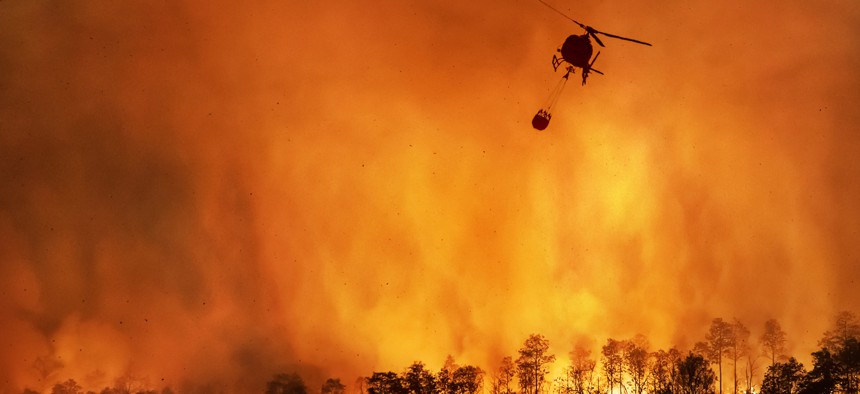Western States Prepare for Battle in Historic Wildfire Season

istock.com/Toa55
States are poised to spend hundreds of millions, even billions, in state funding while U.S. senators urged the Biden administration to provide additional relief money quickly.
Multiple western states are planning to allocate hundreds of thousands, even billions, of dollars to fighting what experts say will be a historic wildfire season this year.
Legislators in Arizona are poised to approve a proposal allocating $100 million to fighting wildfires after Gov. Doug Ducey called a special session to address funding for ongoing blazes and the threat of additional fires amid persistent drought in the state.
“State legislative leaders and I have agreed to invest $100 million to combat and prevent wildfires, equip firefighters and communities with the resources they need, and prepare for after effects such as flooding and mudslides,” Ducey said Monday in a series of tweets. “This special session will ensure our state is ready to combat this season’s wildfires and address potentially deadly after effects.”
The session convened on Tuesday and committees gave initial approval to the proposals on Wednesday, with final votes expected this week. As written, the legislation would allocate just under $100 million to the Department of Forestry and Fire Management for “wildfire emergency response and mitigation efforts.”
There are at least a dozen active wildfires in the state, including the quickly merging Telegraph and Mescal fires, which have collectively scorched more than 210,000 acres.
This year is on pace to one of the worst fire seasons in history for Arizona, already with 896 fires that have burned more than 289,000 acres, David Tenney, the state forester and director of the Department of Forestry and Fire Management, told lawmakers on Wednesday. Last year at this point, only 62,000 acres had burned, he said.
“It’s dryer, hotter and worse than what we have ever seen,” Tenney said at a hearing of the joint state House-Senate Committee on Natural Resources, Energy, and Water.
Local officials stressed the need for financial help, noting that federal relief funding will likely not arrive in time to deal with the immediate aftermath of the fires, including mudslides and floods.
“Our biggest concern is timing,” Pinal County Grants Administrator Tami Ryall told the committee. “You can probably detect the panic in our voices. We’re afraid other sources of money will not be here fast enough. The clock is ticking. We have about three weeks.”
Wildfires Spreading Throughout the West
Officials in neighboring states, including Idaho and Colorado, are bracing for historic fire seasons, too. In Washington state, lawmakers also allocated funding to fight and prevent wildfires, sending $125 million every two years over the next four biennial budgets to “boost wildfire response, accelerate forest restoration, and build community resilience.”
California Gov. Gavin Newsom introduced a plan to double the state’s firefighting budget to $2 billion. Last year more than 4 million acres in California burned, the most destructive fire season on record. Oregon has yet to vote on a sweeping bill that would boost firefighting capacity and require localities to develop mitigation plans, among other things.
A group of U.S. senators from western states on Wednesday sent a letter to the Biden administration requesting additional relief for both current and future wildfires, noting extensive drought conditions are likely to spark unprecedented numbers of blazes.
“According to the drought monitor, over half of the United States is experiencing a historic drought. Over 95% of the West is now either abnormally dry or in a drought, which is among the highest percentages in the past 20 years,” the letter reads. “In addition, over 800,000 acres of forests and rangelands have been burned by wildfire over the past year. The scale and nature of the problem is quickly outpacing the availability of funding and authorities of federal agencies.”
Kate Elizabeth Queram is a senior reporter for Route Fifty and is based in Washington, D.C.
NEXT STORY: VDOT automates the dull out of doing business





